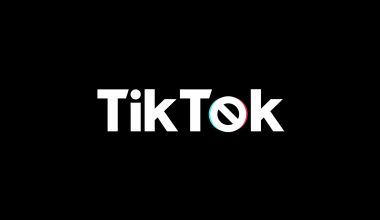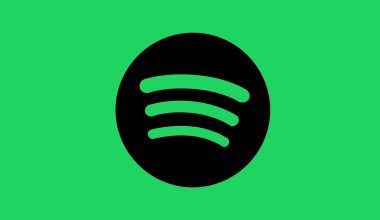Creating music is an art, but making a living from it is a science. For any artist, the ultimate dream is to share their creations with the world and earn a sustainable income. With streaming platforms dominating the music industry today, it has become easier than ever to monetize your track and earn money. In this comprehensive guide, we’ll explore actionable steps, strategies, and tips to help you turn your music into a revenue-generating asset.
Why Monetizing Your Track Matters
If you’re a musician, your music is your product. Just like any other product, it holds value, and streaming platforms provide the perfect medium to make that value tangible. By monetizing your tracks, you ensure that every play, download, and share contributes to your income. Whether you’re an indie artist or part of a label, monetization is the gateway to financial independence in your music career.
How Streaming Platforms Work
Before diving into the process of earning money, it’s essential to understand how streaming platforms operate. Platforms like Spotify, Apple Music, YouTube Music, and others pay artists based on the number of streams their tracks receive. These payments typically come from subscription fees and advertising revenue. By monetizing your track on these platforms, you’re essentially opening a channel to access this income.
Step-by-Step Guide to Monetizing Your Track
1. Choose the Right Distributor
Distributors are the bridge between your music and streaming platforms. They ensure your track gets uploaded and is eligible for monetization. Some popular distributors include TuneCore, DistroKid, and Deliver My Tune. Compare their fees, royalties, and additional services to choose the one that fits your needs.
2. Optimize Your Track Metadata
Metadata includes your track’s title, artist name, album name, and other information. Platforms use this data to identify and categorize your music. Accurate and detailed metadata ensures your music is discoverable, which can lead to more streams and revenue.
3. Sign Up for Performance Rights Organizations (PROs)
Performance Rights Organizations like ASCAP, BMI, or PRS collect royalties on behalf of artists whenever their music is played in public spaces, such as radio stations, bars, or live events. Registering with a PRO ensures you’re not leaving money on the table.
4. Leverage YouTube Content ID
YouTube Content ID helps you monetize your track when it’s used in user-generated content. By registering your music, you can earn revenue from ads placed on videos that include your tracks.
5. Enable Monetization on All Platforms
Every streaming platform has its own set of rules for monetization. For instance, YouTube requires you to join the YouTube Partner Program, while Spotify handles monetization through distributors. Ensure you’ve completed all the necessary steps on each platform.
Boosting Revenue: Tips and Tricks
Create High-Quality Music
The quality of your music plays a significant role in attracting listeners. Invest in professional production, mixing, and mastering to make your track stand out.
Engage Your Audience
Engagement drives streams. Use social media platforms like Instagram, TikTok, and Twitter to promote your track. Create challenges, teasers, and behind-the-scenes content to build excitement.
Collaborate with Influencers and Creators
Partnering with influencers can give your music a wider reach. Many creators look for tracks to use in their videos, and a collaboration can lead to thousands of streams.
Pitch Your Track for Playlists
Being featured on popular playlists can significantly boost your streams. Use Spotify for Artists to pitch your track for editorial playlists. Independent curators and algorithm-driven playlists are also great options.
Run Promotions and Ads
Investing in promotions can be a game-changer. Platforms like Facebook Ads or Spotify Ad Studio allow you to target specific audiences who are likely to enjoy your music.
Common Mistakes to Avoid
Monetizing your track requires strategic planning. Avoid these common pitfalls:
- Ignoring Analytics: Track your performance metrics to understand what’s working and what’s not.
- Focusing Only on One Platform: Diversify your efforts across multiple platforms to maximize revenue.
- Neglecting Marketing: Without promotion, even the best tracks can go unnoticed.
Expanding Beyond Streaming Platforms
While streaming platforms are a primary source of income, there are additional ways to monetize your music:
- Merchandising: Sell branded merchandise like T-shirts, hoodies, and posters.
- Live Performances: Host virtual or in-person concerts and sell tickets.
- Sync Licensing: License your track for use in movies, TV shows, or commercials.
The Role of Consistency
Success doesn’t happen overnight. Consistently releasing new music and engaging with your audience is key to building a sustainable income. Each new release adds to your catalog, increasing your potential for long-term revenue.
The Future of Music Monetization
With the rise of blockchain technology and NFTs, new avenues for music monetization are emerging. Platforms like Audius and Bandcamp allow artists to retain a larger share of their earnings. Stay updated with industry trends to remain ahead of the curve.
Conclusion
Monetizing your track on all streaming platforms is not just a possibility—it’s a necessity for artists aiming to earn a steady income. By taking the right steps and avoiding common mistakes, you can turn your passion into a lucrative career. Remember, the key to success lies in consistency, quality, and audience engagement. Start monetizing your track today and earn money while sharing your art with the world.
For further reading, explore these related articles:
- Exploring the Depth of Adele’s “Go Easy on Me” Lyrics: A Journey of Vulnerability and Redemption
- The Power of Rock Music: A Journey Through Its History and Influence
For additional resources on music marketing and distribution, visit Deliver My Tune.






